- What are Rowan Berries?
- Uses of Rowan Berries
- Caution and Considerations
- Historical Cultivation of Rowan Berries
- Ancient Celtic Culture
- Traditional European Uses
- Modern Cultivation
- Cultivating Rowan Trees
- Choosing the Right Location
- Planting
- Watering and Fertilizing
- Pruning
- Pests and Diseases
- Ideal Growing Conditions for Rowan Trees
- 1. Sunlight
- 2. Soil
- 3. Watering
- 4. Climate
- 5. Pruning
- 6. Pests and Diseases
- Rowan Tree Pruning and Maintenance
- Pruning
- Maintenance
- Types of Rowan Trees
- 1. Common Rowan (Sorbus aucuparia)
- 2. American Rowan (Sorbus americana)
- 3. Caucasian Rowan (Sorbus caucasica)
- 4. Japanese Rowan (Sorbus commixta)
- 5. Swedish Rowan (Sorbus intermedia)
- 6. Tibetan Rowan (Sorbus cuspidata)
- Common Rowan Varieties
- Rare and Endangered Rowan Varieties
- 1. Sorbus devoniensis
- 2. Sorbus wilmottiana
- 3. Sorbus bristoliensis
- 4. Sorbus admonitor
- 5. Sorbus grayana
- Harvesting and Preserving Rowan Berries
- Drying
- Freezing
- Making Rowan Berry Jelly
- When and How to Harvest Rowan Berries
- When to Harvest
- How to Harvest
- Additional Tips
- Question-answer:
- What is rowan cultivation?
- Are there different types of rowan trees?
- What are some popular varieties of rowan trees?
- Can rowan trees be grown in different climates?
- What are the uses of rowan berries?
- Video: All 20 Sage’s Will Location Guide – Tears of the Kingdom
Rowan is a versatile tree that is grown for its ornamental value as well as its delicious fruit. Also known as mountain ash, rowan trees are native to North America and Europe and can be found in a variety of environments, from forests to urban parks. In this article, we will explore the cultivation of rowan trees, their different types and varieties, and everything else you need to know about this fascinating plant.
Rowan trees are relatively easy to grow and are suitable for both experienced gardeners and beginners. They prefer well-draining soil and can tolerate a range of pH levels. While they can grow in full sun, they also thrive in partial shade. Rowans are generally resistant to diseases and pests, making them a low-maintenance option for any garden.
One of the most appealing features of rowan trees is their stunning autumn foliage. The leaves turn vibrant shades of red, orange, and yellow, creating a spectacular display. In addition to their aesthetic value, rowan trees also produce small, bright red berries in clusters, which are a favorite food source for birds. These berries can also be used to make jams, jellies, and liqueurs.
“The rowan tree is often associated with folklore and mythology. It is believed to have magical powers and is often planted near homes for protection against evil spirits. In some cultures, rowan berries are used as charms or talismans to ward off negative energy.”
There are several types and varieties of rowan trees available, each with its unique characteristics. Popular cultivars include the “Sorbus aucuparia” with its dense clusters of bright red berries and the “Sorbus hupehensis” with its graceful, arching branches. The “Sorbus torminalis”, also known as the wild service tree, has glossy, dark leaves and is highly regarded for its timber.
Whether you are looking to add beauty to your landscape, attract birds to your garden, or simply enjoy the delicious fruit, rowan trees are an excellent choice. With their ease of cultivation and wide variety of options, there is sure to be a rowan tree that suits your needs. So why not plant a rowan tree and reap the many benefits this remarkable plant has to offer?
What are Rowan Berries?
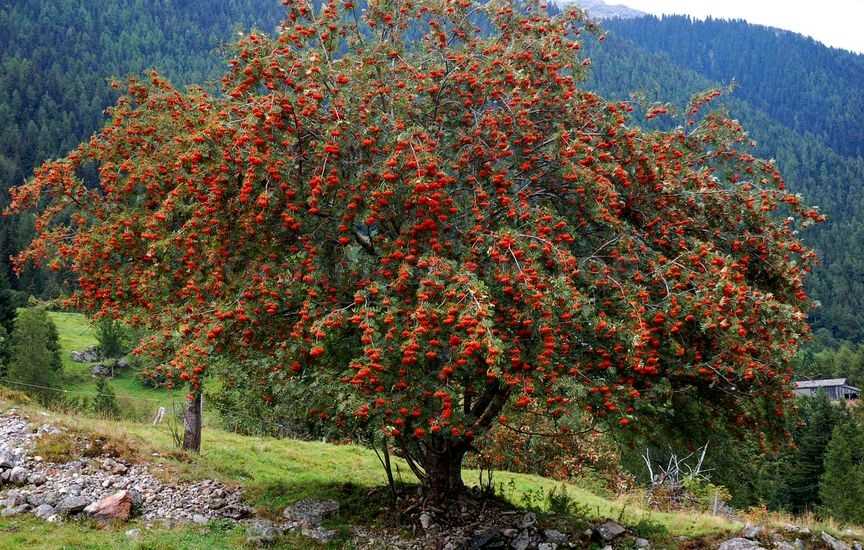
Rowan berries are the fruits that grow on trees from the Sorbus genus, specifically the Sorbus aucuparia species. These small, round berries are often referred to as mountain ash berries due to their resemblance to the leaves of the ash tree, even though they are not related.
Rowan berries are typically bright orange or red in color, although some varieties may be yellow. They grow in clusters, similar to grapes, and each berry is typically around a centimeter in diameter. These berries are not typically consumed raw due to their bitterness, but they are commonly used in various culinary applications.
Uses of Rowan Berries
1. Culinary Purposes: Rowan berries are often used in cooking and food preparation. While they are too bitter to eat raw, they can be used to make jams, jellies, sauces, and other preserves. These berries are also used to flavor alcoholic beverages such as schnapps and liqueurs.
2. Medicinal Benefits: Rowan berries have been used for their medicinal properties in traditional medicine for centuries. They are believed to have anti-inflammatory, antibacterial, and antioxidant properties. These berries are also rich in vitamins, minerals, and dietary fibers, which can help support overall health.
3. Wildlife Food: Rowan berries are an important food source for various wildlife, including birds such as thrushes, blackbirds, and waxwings. The high sugar content of these berries provides a vital source of energy for these animals, especially during the winter months when food sources may be limited.
Caution and Considerations
While rowan berries have various uses and benefits, it’s important to note that they are not suitable for everyone. Some people may experience allergic reactions to these berries, especially if they have a known sensitivity to certain fruits or berries. Additionally, rowan berries should not be consumed in excess, as their bitter taste can be unpleasant and may cause digestive issues.
If you are considering using rowan berries for culinary or medicinal purposes, it’s best to consult with a healthcare professional or experienced forager to ensure safe and appropriate usage.
Historical Cultivation of Rowan Berries
The cultivation of rowan berries dates back to ancient times. This fruit-bearing tree has been an important part of many cultures throughout history. The name “rowan” comes from the Old Norse word “raun,” which means “red.”
Rowan berries were commonly used in traditional medicine by various indigenous cultures. They believed that the berries had mystical properties and could protect against evil spirits and witches. The trees were often planted near houses for this very reason.
Ancient Celtic Culture
The Celts considered the rowan tree to be sacred and believed it had powerful protective qualities. It was associated with the warrior goddess Brigid and was often used in religious ceremonies and rituals. The rowan tree was believed to be a gateway between the mortal world and the spiritual realm.
The Celts also used rowan berries to make alcoholic beverages, such as wine and beer. The berries were fermented and mixed with honey to create a sweet and intoxicating drink.
Traditional European Uses
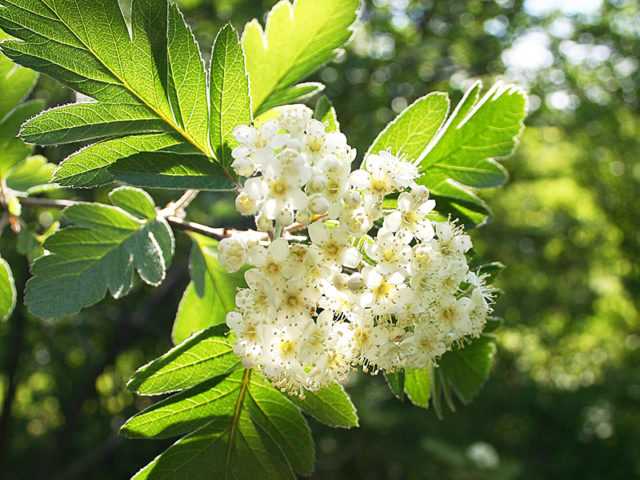
In Europe, rowan berries were widely used in cooking and baking. They were made into jams, jellies, syrups, and sauces. The tart taste of the berries adds a unique flavor to both sweet and savory dishes.
Rowan berries were also used to make traditional alcoholic drinks, such as liqueurs and schnapps. The berries were steeped in alcohol and left to infuse for several weeks, creating a flavorful and aromatic beverage.
In addition to its culinary uses, rowan berries were used for their medicinal properties. They were believed to have anti-inflammatory and antioxidant effects. Rowan berries were used to treat various ailments, including digestive issues, colds, and flu.
Modern Cultivation
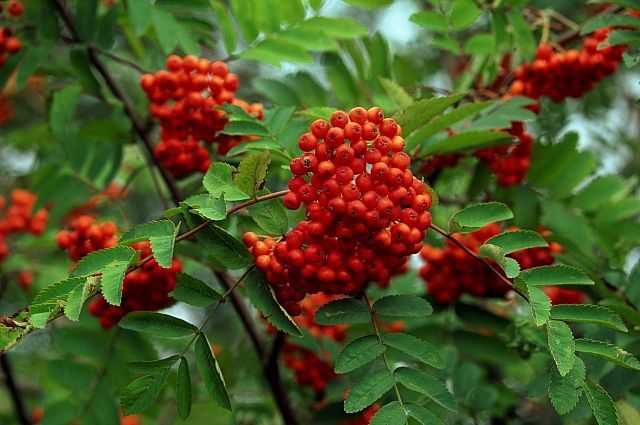
Today, rowan berries are still cultivated in many parts of the world. They are mainly used for culinary purposes, as their tart flavor adds a unique twist to dishes and beverages. Rowan berries are also commonly used in traditional medicine and herbal remedies.
The cultivation of rowan berries has become more widespread, and many varieties and hybrids have been developed. Some varieties have larger berries, while others have a sweeter taste. The cultivation techniques have also improved, allowing for better crop yields and more efficient harvesting.
| Variety | Characteristics |
|---|---|
| Malus sylvestris | Small berries, tart flavor |
| Sorbus aucuparia | Medium-sized berries, slightly sweet |
| Amelanchier spp. | Large berries, sweet taste |
Rowan berries continue to be a popular fruit, valued for their taste, nutritional properties, and historical significance. Whether used in cooking, brewing, or traditional medicine, these berries have left a lasting legacy.
Cultivating Rowan Trees
Rowan trees, also known as mountain ashes, are popular trees that are widely cultivated for their attractive appearance and their ability to withstand harsh weather conditions. Here are some tips for successfully cultivating rowan trees.
Choosing the Right Location
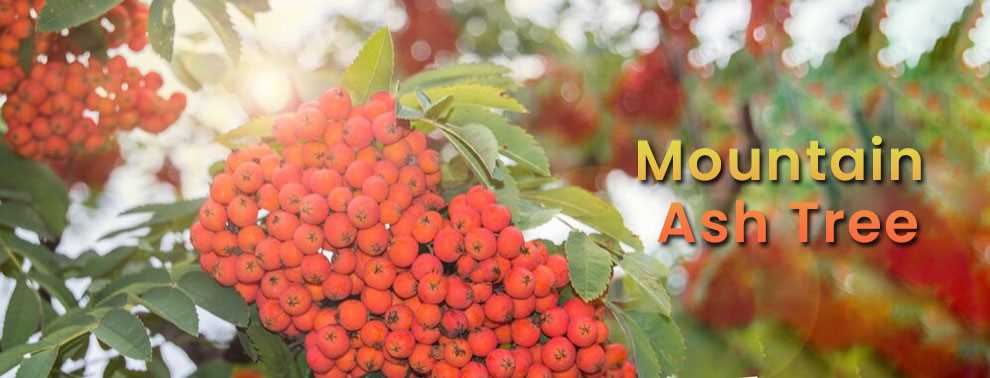
Rowan trees thrive in well-drained soil that is rich in organic matter. They prefer full sun but can tolerate partial shade. When choosing a location for planting your rowan tree, make sure it is away from other large trees and buildings that could shade it or compete for nutrients. It is also important to consider the tree’s mature size and ensure there is enough space for it to grow.
Planting
When planting a rowan tree, dig a hole that is wide and deep enough to accommodate the root ball. Carefully remove the tree from its container and gently loosen the roots before placing it in the hole. Backfill the hole with soil, making sure to firm it gently around the roots to eliminate air pockets. Water the tree thoroughly after planting to establish good root growth.
Watering and Fertilizing
Proper watering is essential for the healthy growth of rowan trees. Water your tree regularly, especially during dry periods, to keep the soil moist but not waterlogged. Apply a layer of organic mulch around the base of the tree to help retain moisture and suppress weed growth.
Rowan trees generally do not require much fertilizer, as they can extract nutrients from the soil. However, if you notice poor growth or yellowing leaves, you can apply a balanced fertilizer in early spring. Be careful not to over-fertilize, as this can lead to excessive foliage growth at the expense of fruits.
Pruning
Pruning rowan trees is mainly done to maintain their shape and remove dead or diseased branches. It is best to prune in late winter or early spring before the tree starts to actively grow. Avoid heavy pruning, as rowan trees have a naturally attractive shape. Trim the tree lightly to encourage even growth and remove any crossed or rubbing branches.
Pests and Diseases
Rowan trees are generally resistant to most pests and diseases. However, they can occasionally suffer from aphid infestations or fungal diseases such as powdery mildew. Regularly inspect your tree for any signs of pests or diseases and take appropriate action if necessary. In general, maintaining good tree health through proper watering and fertilizing practices can help prevent pest and disease problems.
By following these cultivation tips, you can enjoy the beauty of rowan trees in your garden or landscape. Whether you choose a common species or a unique variety, rowan trees are sure to add aesthetic value and attract wildlife to your outdoor space.
Ideal Growing Conditions for Rowan Trees
Rowan trees (Sorbus aucuparia) are native to Europe and are well-known for their strikingly beautiful foliage and vibrant clusters of bright red berries. These trees are highly valued for their ornamental appeal and are often planted in gardens and landscapes. To ensure the healthy growth and development of rowan trees, it is essential to provide them with the ideal growing conditions.
1. Sunlight
Rowan trees thrive in full sunlight. They require at least six hours of direct sunlight each day to ensure proper growth and ample fruit production. Planting rowan trees in an open, sunny location will help them receive the necessary sunlight for optimal development.
2. Soil
Well-drained soil is crucial for rowan trees. They prefer rich, moist soil that is slightly acidic to neutral in pH. Ensuring good drainage is essential, as rowan trees are susceptible to root rot in waterlogged soil. Adding organic matter, such as compost or well-rotted manure, can help improve soil fertility and drainage.
3. Watering
While rowan trees are relatively drought-tolerant, regular watering is necessary, especially during dry periods. Water deeply to encourage deep root growth, but be careful not to overwater, as excessive moisture can lead to root rot. Mulching around the base of the tree can help retain moisture and regulate soil temperature.
4. Climate
Rowan trees are adaptable and can tolerate a wide range of climates. They are hardy in USDA zones 3-7 and can withstand temperatures as low as -30 degrees Fahrenheit (-34 degrees Celsius). However, they perform best in cool to temperate climates, with moderate rainfall.
5. Pruning
Pruning is beneficial for rowan trees to maintain their shape, improve air circulation, and promote healthy growth. It is best to prune rowan trees during late winter or early spring, before new growth begins. Remove any dead, damaged, or crossing branches to prevent disease and encourage better branching structure.
6. Pests and Diseases
Rowan trees are generally resistant to most pests and diseases. However, they may be susceptible to aphids, caterpillars, and sawflies. Regular monitoring and appropriate pest control measures, such as biological controls or insecticidal sprays, can help manage infestations. Additionally, proper sanitation and good cultural practices can minimize the risk of fungal diseases.
| Growing Conditions | Requirements |
|---|---|
| Sunlight | Full sunlight (at least 6 hours per day) |
| Soil | Well-drained, slightly acidic to neutral |
| Watering | Regular watering, deep but not excessive |
| Climate | Cool to temperate, with moderate rainfall |
| Pruning | Late winter or early spring |
By providing rowan trees with these ideal growing conditions, gardeners and landscapers can ensure the health and vitality of these beautiful trees. With proper care, rowan trees can thrive and provide year-round visual interest, from their lovely flowers in spring to their colorful berries in autumn.
Rowan Tree Pruning and Maintenance
Pruning and maintenance play a crucial role in keeping your rowan tree healthy and attractive. Proper care allows your tree to reach its full potential and ensures its longevity.
Pruning
Pruning is necessary to remove dead, diseased, or damaged branches and to shape the tree to your desired form. The best time to prune a rowan tree is during late winter or early spring when the tree is dormant.
Here are some guidelines for pruning a rowan tree:
- Use clean and sharp pruning tools to make clean cuts and prevent the spread of diseases.
- Start by removing any dead, diseased, or broken branches. Cut them back to the point where they meet another healthy branch or the main trunk.
- Shape the tree by removing excessive or crossing branches to improve the overall appearance and structure.
- Remove any suckers, which are shoots that grow from the base of the tree. These shoots can weaken the tree if left unattended.
- Prune the tree gradually over a few years to avoid removing too much foliage at once and to allow the tree to recover properly.
Maintenance
In addition to pruning, proper maintenance is essential for the health of your rowan tree:
- Water young trees regularly, especially during dry periods, to establish a good root system. Mature trees are generally drought-tolerant and do not require regular watering.
- Mulch around the base of the tree to retain moisture and suppress weed growth. Apply a layer of organic mulch, such as wood chips or bark, around 2-3 inches thick, but make sure to keep the mulch away from the trunk to prevent rotting.
- Fertilize the tree annually with a balanced fertilizer in early spring to provide essential nutrients. Follow the instructions on the fertilizer package for proper application rates.
- Inspect the tree regularly for signs of pests or diseases. If you notice any issues, consult with a professional arborist to diagnose and treat the problem.
| Pruning | Remove dead, diseased, or damaged branches Shape the tree to desired form Gradually prune over a few years |
|---|---|
| Maintenance | Water young trees regularly Mulch around the base Fertilize annually Inspect for pests and diseases |
Types of Rowan Trees
Rowan trees, also known as mountain ash trees, belong to the genus Sorbus and are native to the temperate regions of the Northern Hemisphere. They are widely cultivated for their ornamental value and for their bright red or orange berries, which attract birds and other wildlife. There are several types of Rowan trees, each with its own unique characteristics.
1. Common Rowan (Sorbus aucuparia)
The common Rowan tree is the most widely distributed species of Rowan and can be found throughout Europe, northern Asia, and Siberia. It is a small to medium-sized deciduous tree with pinnate leaves and clusters of white flowers that bloom in late spring. The berries of the common Rowan are bright red and ripen in autumn. It is a hardy tree that can tolerate a wide range of soil conditions.
2. American Rowan (Sorbus americana)
The American Rowan, also known as the American mountain ash, is native to eastern North America. It is a small deciduous tree with compound leaves and clusters of white flowers that bloom in late spring. The berries of the American Rowan are bright red and ripen in late summer or early fall. This species is often cultivated for its ornamental value.
3. Caucasian Rowan (Sorbus caucasica)
The Caucasian Rowan is native to the Caucasus Mountains in eastern Europe and western Asia. It is a small to medium-sized deciduous tree with pinnate leaves and clusters of white or pink flowers that bloom in late spring. The berries of the Caucasian Rowan are bright red and ripen in autumn. This species is valued for its tolerance to drought and its ability to thrive in poor soil conditions.
4. Japanese Rowan (Sorbus commixta)
The Japanese Rowan, also known as the mountain ash tree, is native to Japan and Korea. It is a small to medium-sized deciduous tree with pinnate leaves and clusters of white flowers that bloom in late spring. The berries of the Japanese Rowan are bright red and ripen in autumn. This species is often cultivated for its ornamental value due to its vibrant fall foliage.
5. Swedish Rowan (Sorbus intermedia)

The Swedish Rowan, also known as the Swedish mountain ash, is native to northern Europe and parts of Asia. It is a small deciduous tree with pinnate leaves and clusters of white flowers that bloom in late spring. The berries of the Swedish Rowan are bright red and ripen in autumn. This species is valued for its tolerance to cold climates and its ability to attract birds.
6. Tibetan Rowan (Sorbus cuspidata)
The Tibetan Rowan is native to the Himalayas and other mountainous regions of Asia. It is a small to medium-sized deciduous tree with pinnate leaves and clusters of white flowers that bloom in late spring. The berries of the Tibetan Rowan are bright red and ripen in autumn. This species is valued for its ability to withstand harsh climates and its resistance to pests and diseases.
These are just a few examples of the many different types of Rowan trees that exist. Each species has its own unique characteristics and is valued for its ornamental value, wildlife attraction, or adaptability to specific environmental conditions. Whether planted in gardens, parks, or natural landscapes, Rowan trees add beauty and diversity to their surroundings.
Common Rowan Varieties
- European Rowan (Sorbus aucuparia): This is the most common variety of rowan, also known as the mountain ash or the European mountain ash. It is native to Europe and has been widely cultivated across the continent. The European rowan tree produces clusters of orange-red berries, which are a favorite food source for birds.
- American Mountain Ash (Sorbus americana): This variety is native to North America and is often referred to as the American mountain ash. It has similar characteristics to the European rowan, with clusters of bright red berries. The American mountain ash is a popular choice for landscaping due to its vibrant foliage and attractive fruit.
- Japanese Rowan (Sorbus commixta): Also known as the Japanese mountain ash, this variety is native to Japan and Korea. It is often grown for its ornamental value, as it produces large clusters of bright red berries and has attractive foliage that changes color in the fall. The Japanese rowan is also resistant to fire blight, making it a desirable choice for gardeners.
These are just a few examples of the common rowan varieties that you can find. Each variety has its own unique characteristics, but all are known for their beautiful clusters of berries and attractive foliage. Whether you are looking to add color to your garden or attract birds, rowan trees are a great choice.
Rare and Endangered Rowan Varieties
The rowan tree (Sorbus aucuparia) is known for its sturdy nature and adaptability to different climates and soil conditions. However, some rowan varieties are classified as rare and endangered due to various reasons such as habitat destruction, over-harvesting, and climate change. Here are some of the rare and endangered rowan varieties:
1. Sorbus devoniensis
The Sorbus devoniensis, also known as the Devon Whitebeam, is a rare rowan variety native to the cliffs of southern and western England. It is endangered due to habitat loss caused by coastal development and agriculture. This variety has distinctive dark green leaves and white flowers, making it an attractive ornamental tree.
2. Sorbus wilmottiana
The Sorbus wilmottiana, commonly known as the Teesdale Whitebeam, is a rare rowan variety found only in Teesdale, England. It is endangered due to habitat destruction caused by mining and agricultural practices. This variety has dark green leaves with silver undersides, giving it an eye-catching appearance.
3. Sorbus bristoliensis
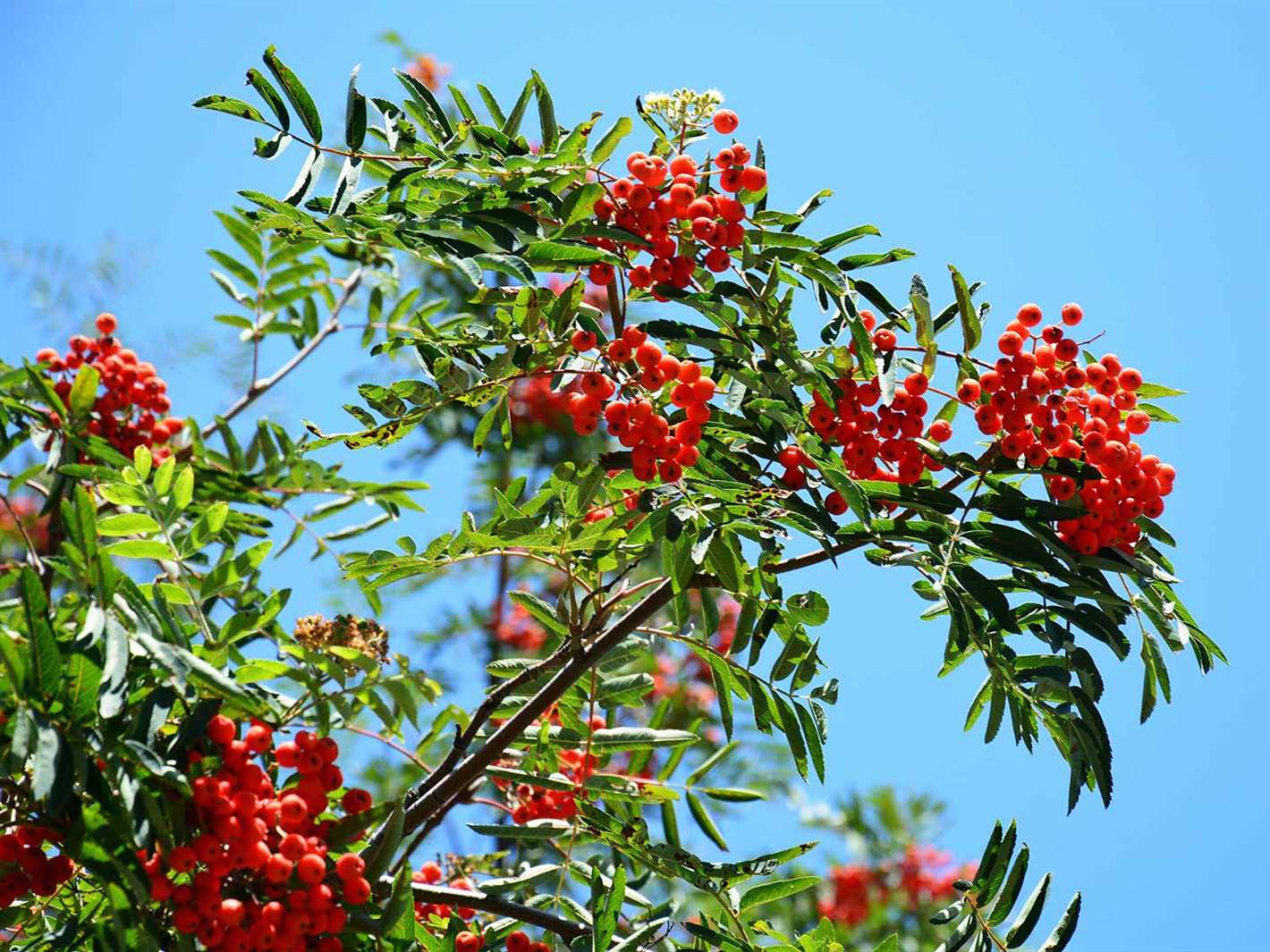
The Sorbus bristoliensis, also known as the Bristol Whitebeam, is an extremely rare rowan variety found exclusively on the Avon Gorge in Bristol, England. It is critically endangered due to habitat loss caused by urbanization and invasive species. This variety has narrow, serrated leaves and clusters of red berries.
4. Sorbus admonitor
The Sorbus admonitor, commonly known as the Gannon Rowan, is an endangered rowan variety found in the wilds of Ireland. It is threatened by habitat degradation caused by farming and land development. This variety has small, pinnately compound leaves and clusters of deep red berries.
5. Sorbus grayana
The Sorbus grayana, also known as the Gray’s Rowan, is a rare rowan variety native to the mountains of Japan. It is endangered due to habitat loss caused by deforestation and climate change. This variety has oval-shaped leaves and dense clusters of bright red berries.
Efforts are underway to conserve and protect these rare and endangered rowan varieties through seed banks, habitat restoration, and public awareness. By preserving their genetic diversity, we can ensure the survival of these unique and valuable tree species for future generations.
Harvesting and Preserving Rowan Berries
Once the rowan berries are fully ripe, it is time to harvest them. Harvesting rowan berries is a simple process that can be done by hand. Here are the steps to follow:
- Choose a sunny day to harvest rowan berries. This allows the berries to be at their sweetest and most flavorful.
- Make sure to wear gloves while harvesting rowan berries as they can stain the skin.
- Carefully examine the berries before picking them. Choose berries that are fully ripe, plump, and bright red in color. Avoid berries that are shriveled, blemished, or have signs of mold.
- Hold the berry cluster in one hand and gently pull the berries off the stem using your other hand. Be careful not to crush the berries.
- Place the harvested berries in a clean container. Avoid overcrowding the berries to prevent bruising.
After harvesting rowan berries, it is important to properly preserve them to maintain their freshness and flavor. Here are some methods for preserving rowan berries:
Drying
One method of preserving rowan berries is by drying them. Follow these steps:
- Rinse the harvested berries in cool water to remove any dirt or debris.
- Spread the berries out in a single layer on a clean towel or a wire rack.
- Place the berries in a well-ventilated area, away from direct sunlight, and allow them to air dry for several days. Stir them occasionally to ensure even drying.
- Once the berries are completely dry and shriveled, transfer them to an airtight container for storage.
Freezing
Freezing rowan berries is another method to extend their shelf life. Here’s how:
- Rinse the harvested berries in cool water to remove any dirt or debris.
- Spread the berries out on a baking sheet lined with parchment paper.
- Place the baking sheet in the freezer and freeze the berries until firm.
- Transfer the frozen berries to airtight freezer bags or containers.
Making Rowan Berry Jelly
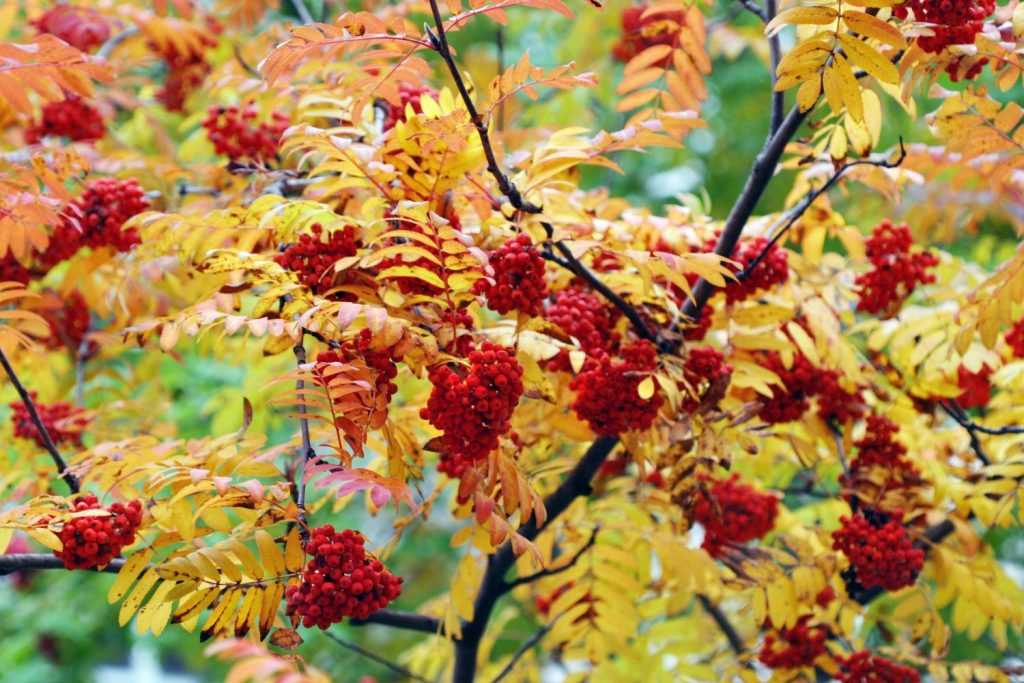
Rowan berries can also be turned into delicious jelly. Here is a simple recipe:
| Ingredients: | Instructions: |
|---|---|
| 4 cups rowan berries |
|
By following these methods, you can enjoy the tangy and vibrant flavor of rowan berries throughout the year.
When and How to Harvest Rowan Berries
Harvesting rowan berries is an exciting process that allows you to enjoy the fruits of your labor. It’s important to know the right time to harvest and the proper techniques to ensure a successful harvest.
When to Harvest
- The ideal time to harvest rowan berries is in late summer or early autumn, usually between August and September.
- Wait until the berries are fully ripe and have turned a bright red or orange color.
- Avoid harvesting rowan berries too early, as they may be underdeveloped and bitter in taste.
How to Harvest
- Start by wearing gloves and long sleeves to protect your skin from the thorns on the rowan tree.
- Use a pair of sharp secateurs or scissors to cut the clusters of berries from the branches. It’s best to cut the whole cluster instead of individual berries.
- Place the harvested clusters into a basket or bucket, being careful not to crush or bruise the berries.
- Continue harvesting until you have gathered the desired amount of rowan berries.
Additional Tips
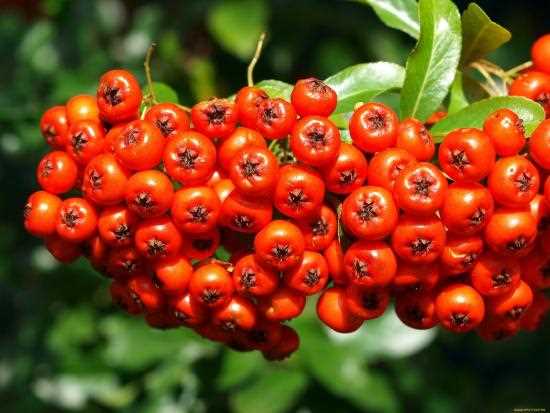
- It’s a good idea to visit your rowan tree in advance and familiarize yourself with its growth patterns, as the exact timing of berry ripening may vary depending on climate and location.
- Check the berries for signs of pests or diseases before harvesting. Avoid picking berries that show signs of damage.
- Once harvested, rowan berries can be used immediately or stored for future use. They can be frozen, dried, or made into jams, jellies, or wines.
- Remember to wash the berries thoroughly before using them in any recipe.
With these tips in mind, you’ll be ready to harvest rowan berries at the perfect time and enjoy the delicious fruits they provide.
Question-answer:
What is rowan cultivation?
Rowan cultivation is the process of growing rowan trees for various purposes, such as ornamental landscaping or harvesting the berries for culinary or medicinal use.
Are there different types of rowan trees?
Yes, there are different types of rowan trees, also known as mountain ash, which can vary in size, leaf shape, and berry color.
What are some popular varieties of rowan trees?
Popular varieties of rowan trees include Sorbus aucuparia, Sorbus commixta, and Sorbus torminalis. Each variety has its own unique features and characteristics.
Can rowan trees be grown in different climates?
Yes, rowan trees can be grown in a variety of climates, but they are most commonly found in temperate regions. They can tolerate cold temperatures and are known for their ability to thrive in mountainous areas.
What are the uses of rowan berries?
Rowan berries are used in various culinary and medicinal applications. They can be used to make jams, jellies, and syrups, as well as in the production of alcoholic beverages. Rowan berries are also believed to have antioxidant and immune-boosting properties.







